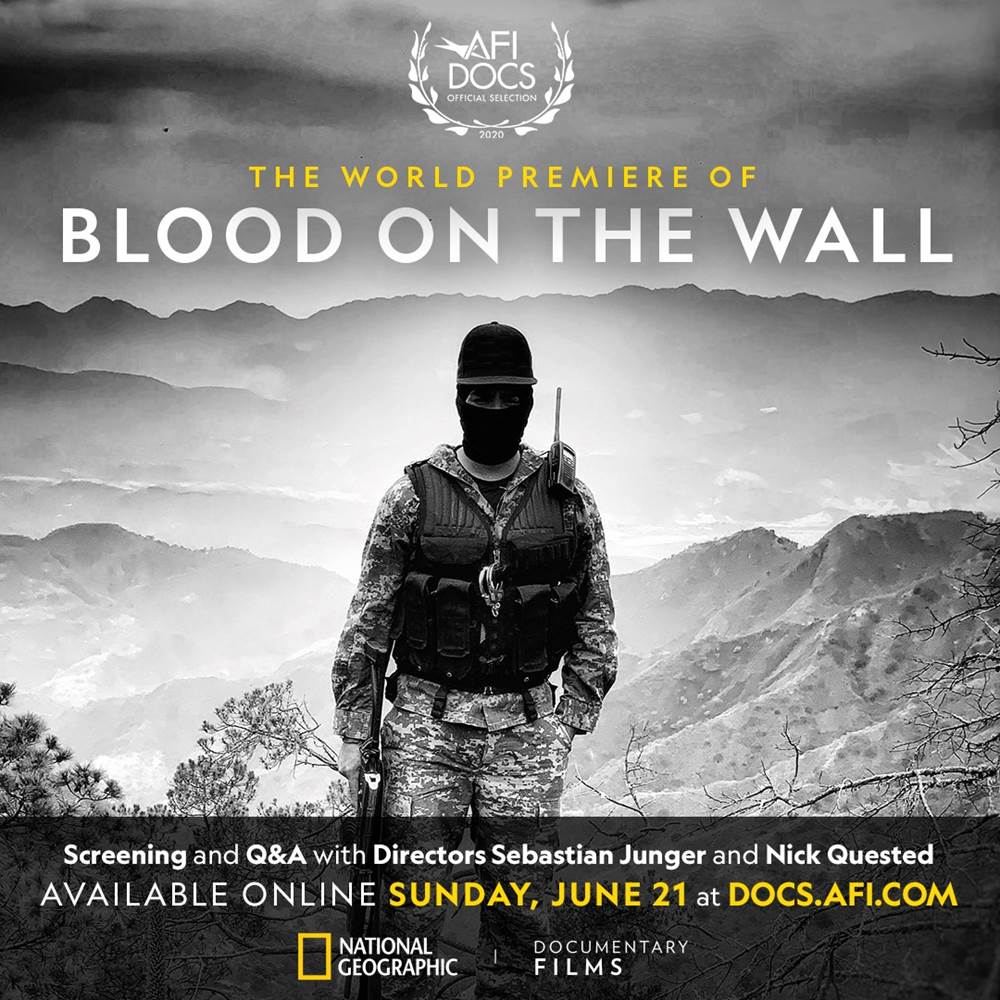The news cycle is full of stories about immigration, particularly in the past four years. But in 2018, it reached a fever pitch with stories of a caravan on their way to the US border from South America. At the same time, Academy Award-nominated director Sebastian Junger and Emmy-winning producer Nick Quested were in South America making a documentary about immigration and ended up caught up in the midst of one of the most controversial news stories in the past decade. Audiences will be able to see it this fall in National Geographic’s documentary film, Blood on the Wall. It premiered this weekend at the AFI Docs Film Festival.
The film primarily follows two parties hoping to make it past the US border. There’s Ludy, a seventeen-year-old girl with no family who has been a rape victen in Guatemala and is traveling with her boyfriend in the caravan for protection. The other focus is on a mother named Sara and her large family of kids ranging from teenagers to a toddler. Their long and perilous journey is chronicled as they desperately fight for their survival.
This two-hour documentary juxtaposes their stories against background information of how life south of the border has evolved into its current hostile state and the USA’s involvement in it. The film is somewhat bookended by a heroin runner in Arizona, a US resident who isn’t nervous every time she goes through border patrol on her way in and out. The history of how heroin and crack production became a way of life and a source of power is well documented throughout the film.
It’s impossible to tell this story without getting into political corruption and the film uses interviews from lawyers and analysts to track how things got to such a breaking point. There’s no single bad guy to put blame on in the bigger story, but it does point out a few key moments, including how killing or imprisoning cartel leaders has often exacerbated the issue. It was particularly interesting to watch it at a time in the United States when distrust in local law enforcement is at an all time high while seeing areas of Mexico where police somehow have access to weapons that are exclusive to the military and where private citizens go missing at the hands of officers, with 98% of all crimes unsolved in the country.
The main point of Blood on the Wall is that people who risk their lives to get to the United States are doing it out of desperation for a better life. As long as there is demand for drugs, there will be bad actors willing to do anything to make some of that money. And as long as there’s money to be made, there will be corruption in government on either side of the issue willing to make a buck. As the documentary puts it, drugs account for 1/3rd of Mexico’s gross domestic product. It’s a cyclical issue and one with no easy answers.
Blood on the Wall doesn’t get preachy and doesn’t have an overarching narrator to tie it all together. It lets the issue speak for itself and gives viewers the freedom to form their own opinions. It’s riveting and occasionally disturbing, but also a very important film. It’s important to make educated decisions with your right to vote and seeing Blood on the Wall is a necessary step before the next big election.
I give Blood on the Wall 5 out of 5 Minnie Mouse Rear View Mirror Accessories.
Blood on the Wall premieres this fall on National Geographic.

